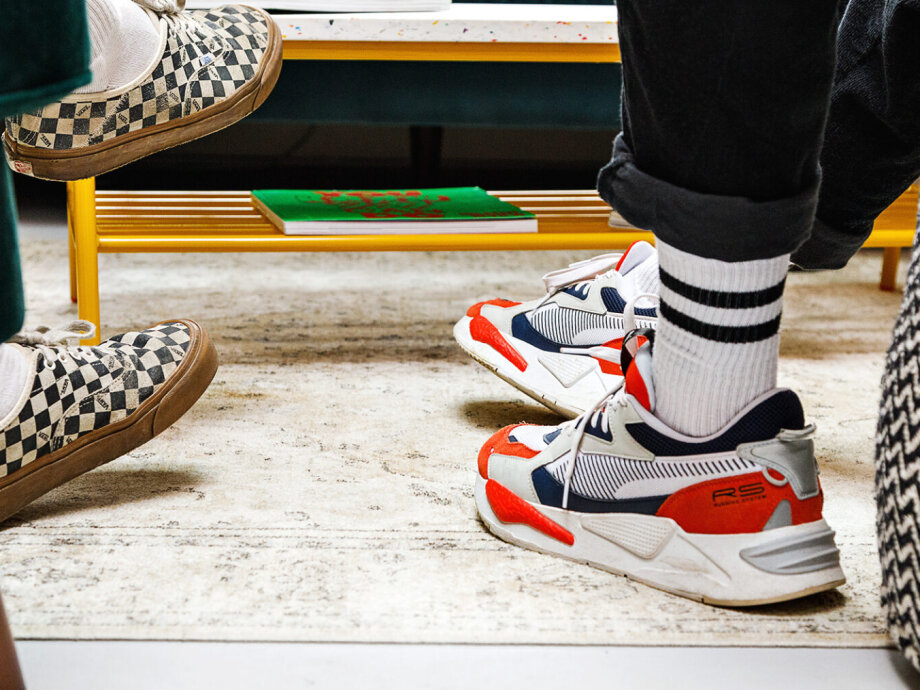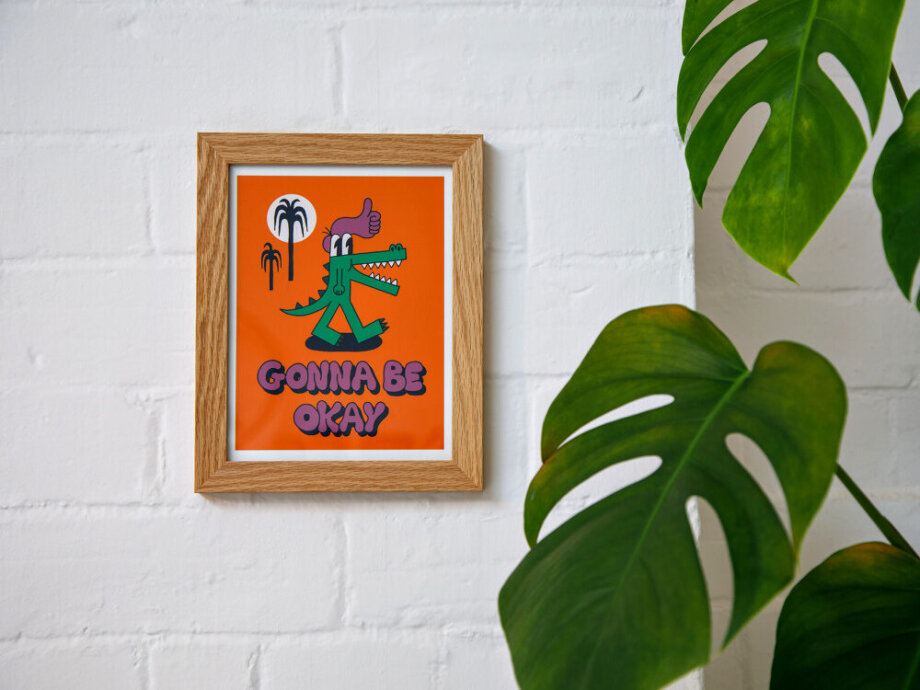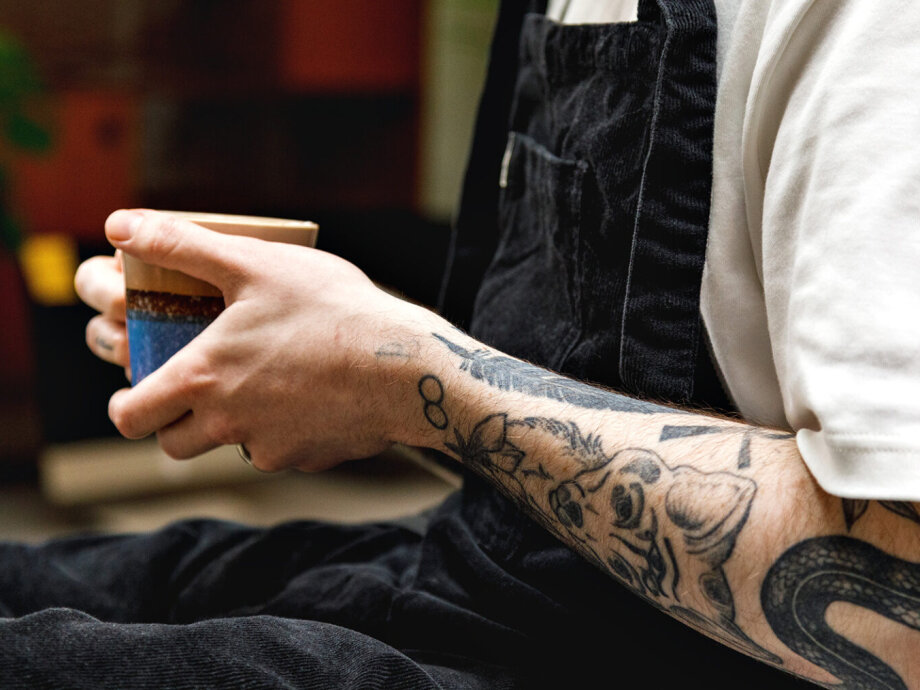Picture the scene. You stay up all night, pour your heart and soul into a portfolio and send it off with a cover letter, full of optimism, only to hear nothing back. Radio silence. Trying to get your foot in the door as a junior can feel daunting, competitive, and sometimes even downright mean.
So what does it take to get that first big break? Mid-weight Digital Designer, Samuel talks about his own experiences; from leaving university to landing his dream job, and how to turn rejection into motivation as a design graduate.
Trying to get your foot in the door as a junior can feel daunting, competitive, and sometimes even downright mean.
Flight path to Fiasco
I left university six years ago with a BA in Graphic Design and a Visual Communication MA. With a brimming portfolio to boot, I thought I’d land my dream job with relative ease. But what actually followed was four years of scraping by on freelance, music sales from my pseudonym Icarus Project, and sending out some 300+ applications.
Meanwhile, I could see people around me quickly ascending their career ladders. My friends were all getting their big break, through either their own creativity and/or a pinch of luck, or a friend or family member who gave them an ‘in’.

Both perfectly fine and sure ways of establishing the roots of your career, but what about the rest of us that didn’t fall into these two columns? I was there. With good grades, a diverse portfolio, and an awful lot of drive and passion.
Fast-forwards a little and I’m now a Digital Designer at Fiasco. Having admired Fiasco from afar, I feel super lucky to be where I am. But if I didn’t have the perseverance to keep going when things were tough, I wouldn’t be here today.
My story isn’t unique. Whilst there are a few who land on their feet straight away, for the vast majority of us it isn’t a smooth process. So here’s some advice to bear in mind:
Whilst there are a few who land on their feet straight away, for the vast majority of us - it isn’t a smooth process.
Don’t let ego get in the way
It’s important to remember that the learning curve doesn’t end when you don your graduation cap. The best designers never stop learning. Unfortunately for me, this wasn’t something I understood immediately.
I knew I was a diverse designer that had a lot to offer. So when I had to face rejection – or even worse – totally ghosted, I took it to heart. Not getting the job you’re gunning for can be hard to not take personally, but rest assured that 99% of the time it’s down to factors outside of your control. Dust yourself off and go again.

Tailor your application
Working at Fiasco has made me realise just how busy studios can be. A lot of studios won’t have a HR department, so you’re really trying to grab a few minutes of someone’s time in between a million other things.
With that in mind, it’s really important to be tailoring each cover letter and portfolio you send out. For example, if you’re applying for a digital role, is it necessary to show as much print and brand work? Take a step back and think about how your skills can be applied to the role you’re applying for and make sure you articulate your reasoning.

Most portfolios at Fiasco land with Ben, our Exec Creative Director & Founder. I asked him what makes an application stand out:
Personally, there are a few steps before I even get to a portfolio. The email subject line (definitely sweat the small stuff) and covering letter (tone, content and design) are often wildly overlooked. I value people who have done their homework – they know a) what we do but b) a bit about us and our culture. I look for attention to detail; this is why the above is so important. It shows me two things: desire, and how much someone really wants it. These are important attributes for anyone that joins Fiasco.
Ben Steers, Co-founder and Creative Director
Perseverance
Staying motivated in the face of (potentially) hundreds of ignored emails is immensely hard. It also takes a lot of guts. Especially when others around you might be doing things slightly quicker. Oh, the joys of social media!
So lay off the painful comparisons. Sure, there’s plenty of value in feeling inspired by others, but it’s important to stay motivated and focused on yourself when those around you are racing ahead. As Roosevelt said, “Comparison is the thief of joy”. And it’s true; you’re not going to feel better for constantly weighing yourself and your work against others.

Fight for feedback
I think I ended up with about 20 replies out of my hundreds of applications, with not a single one containing feedback. It makes improvement an almost impossible task. So my advice would be: pester for feedback, if you think it’s going to benefit you. It shows confidence and maturity to take rejection and still be assertive enough to know what you want.
Before applying for my current role, I asked Digital Lead Mike to give me honest feedback on my portfolio. His feedback made me view things from the other perspective and as a result, I made changes to my portfolio. Perhaps things would be very different now if I hadn’t been assertive in my querying.
I think there’s a real lack of realistic industry preparation on a lot of design courses these days
Julia Darze, Senior Brand Designer
Find your own path
Everybody has different paths. That’s ok. If anything, I think different backgrounds make for a more varied and interesting team to be a part of. I spoke to two of Fiasco’s creatives about their unique paths:
I initially went to university but then had to take some time out and ended up going to Shillington, where I worked on genuine back-to-back briefs. After graduating, I got a job straight away. I’m not sure things would’ve worked out if I’d gotten a traditional design degree. I think there’s a real lack of realistic industry preparation on a lot of design courses.
Julia Darze, Senior Brand Designer
Having set up a company directly out of university and running that for a couple of years, I was able to obtain more experience and understanding on the business side of things. Which actually helped a lot with confidence; specifically taking meetings, talking directly with clients, and presenting work
Mike Frost, Digital Lead
A helping hand
Thankfully, we are beginning to see our industry be more forthcoming with helping people into work. This year our Open Internship promised to comprehensively feedback on every portfolio that landed in our inbox. And we did.
Then recently, we also made our commitment to B-Corp. As part of that, we’re hoping to use our collective expertise to do good and make a difference in the industry; through pro-bono services, as well as volunteering, talks, and lectures.
We’re always keen to chat about ways we can make the route into design a bit smoother. If you have any further thoughts, let us know.









